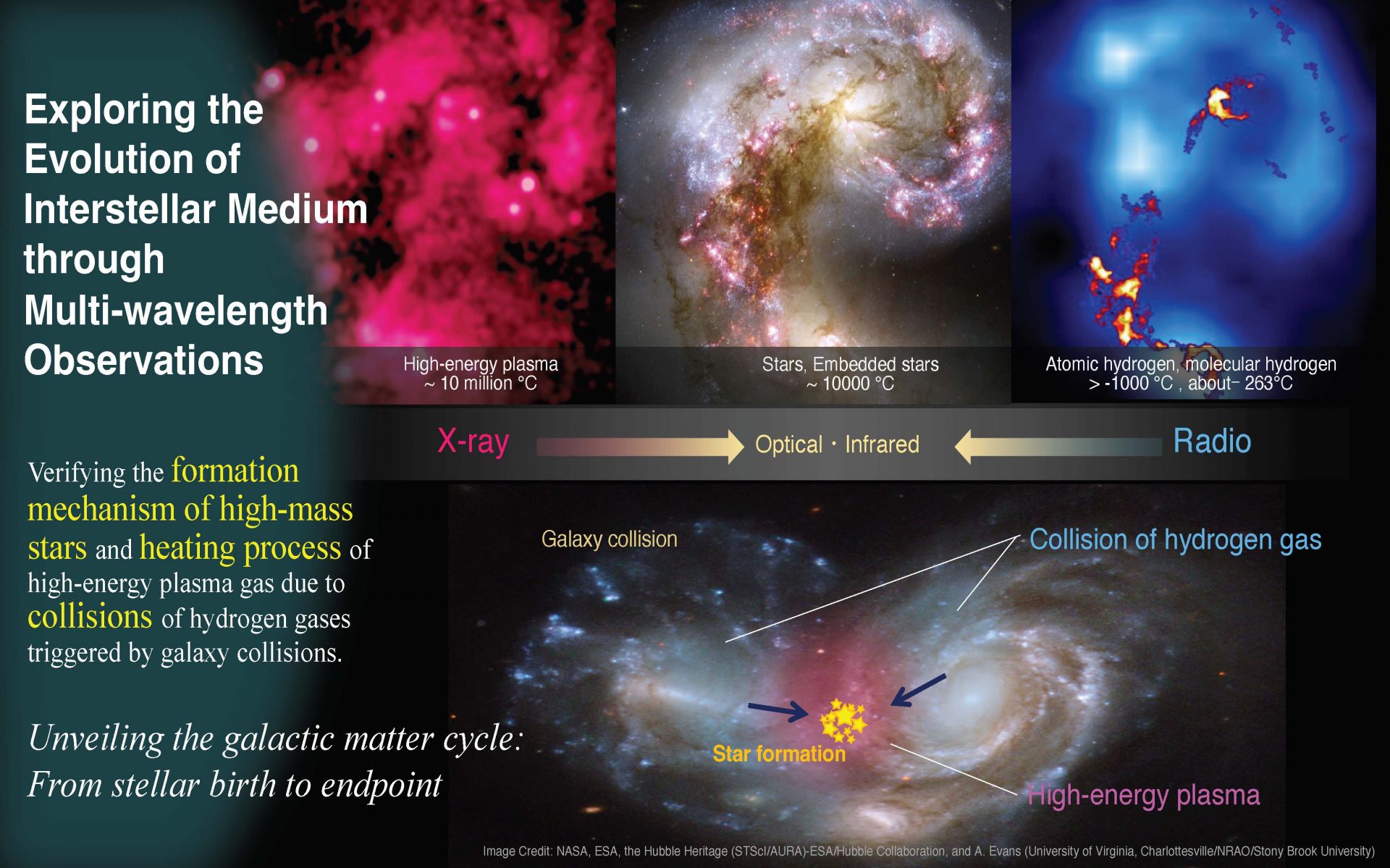Radio astronomy
X-ray astronomy

TSUGE Kisetsu
Starting year 2024
Gifu University
Institute for Advanced Study/Faculty of Engineering Graduate School of Natural Science and Technology
G-YLC Designated Assistant Professor
Research fields
Research Interests
Interstellar medium
star formation
Multiwavelength astronomy
Professional Memberships
Astronomical Society of Japan
International Astronomical Union
Japan Radio Astronomy Forum
High Energy AstroPhysics Association in Japan
Main research topics
In order to understand star formation and evolution of galaxies, it is essential to elucidate the interstellar medium which fills the galaxies. I aim to reveal the mechanism by which the diffuse interstellar plasma governs the energy balance of galaxies. For this purpose, I intend to use observations of X-rays, radio, and optical-infrared emissions. These wavelengths are essential because the interstellar gas has a vast range of physical states characterized by a low temperature of -263 degrees Celsius to a very high temperature of ten million degrees Celsius, which can be probed only in the broad wavelength range. The gases in different states were thought not to be commuting much with each other. In contrast, our recent studies reveal that their transformation is frequent, which plays a significant role in regulating galaxy evolution. In particular, our group revealed that a collision between galaxies very rapidly ionizes the gas in a galaxy to high temperatures, causing active starbursts including the formation of numerous high-mass stars. Such a process is expected to happen often between galaxies and exert tremendous effects on galaxy evolution, where compressed cooled-down gas becomes stellar nursery. I plan to use world-top telescopes, including eROSITA, XRISM, and ALMA, in order to obtain accurate physical quantities along with relevant theoretical studies. We expect that the violent collisions between galaxies are happening often and provide us with a clue to understand energy flow not only on the galaxy scale but also on the universe scale.


Representative papers
Tsuge, H. Sano, K. Tachihara, C. Yozin, K. Bekki, T. Inoue, N. Mizuno, A. Kawamura, T. Onishi, Y. Fukui, “Formation of the Active Star-forming Region LHA 120-N 44 Triggered by Tidally Driven Colliding HI Flows”, The Astrophysical Journal, Volume 871, 44
K. Tsuge, K. Tachihara, Y. Fukui, H. Sano, K. Tokuda, J. Ueda, D. Iono, “The formation of the young massive cluster B1 in the Antennae Galaxies (NGC 4038/NGC 4039) triggered by cloud-cloud collision”, Publications of the Astronomical Society of Japan, 73, 417
Research URL
researchmap Kisetsu Tsuge – My portal – researchmap
Global issues to be solved through this project
Unveiling the galactic matter cycle through multiwavelength observations
– From Stellar birth to Endpoint –
In order to understand star formation and evolution of galaxies, it is essential to elucidate the interstellar medium which fills the galaxies. Interstellar gas takes on a wide range of temperature and density forms, from extremely low temperatures (around -263 degrees Celsius) of molecular hydrogen gas observed in radio waves to high-temperature plasma emitting X-rays at approximately 10 million degrees Celsius. However, there has been limited interaction between different wavelengths due to significant differences in observable physical states and techniques. In this study, we aim to transcend the traditional boundaries of research based on observational wavelengths by establishing connections with cutting-edge research groups across various wavelengths and promoting international collaborative research. Through this effort, we aim to understand the energy and matter cycle of galaxies from star formation to stellar endpoint.
Interview
No interview
News
-
お知らせ
<Message from the Organizer> Research Outcomes Exhibition 2024 –Education and Research in the AI Era-
-
お知らせ
A paper by T-GEx fellow Dr. TSUGE Kisetsu, Gifu University has been published in Astronomy & Astrophysics(A&A).
-
お知らせ
A paper by T-GEx fellow Dr. TSUGE Kisetsu, Gifu University has been published in Publications of the Astronomical Society of Japan.

